Chrysler 2008 Annual Report Download - page 29
Download and view the complete annual report
Please find page 29 of the 2008 Chrysler annual report below. You can navigate through the pages in the report by either clicking on the pages listed below, or by using the keyword search tool below to find specific information within the annual report.-
 1
1 -
 2
2 -
 3
3 -
 4
4 -
 5
5 -
 6
6 -
 7
7 -
 8
8 -
 9
9 -
 10
10 -
 11
11 -
 12
12 -
 13
13 -
 14
14 -
 15
15 -
 16
16 -
 17
17 -
 18
18 -
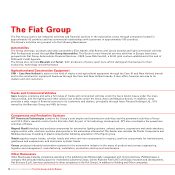 19
19 -
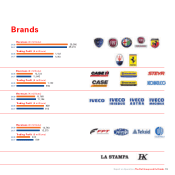 20
20 -
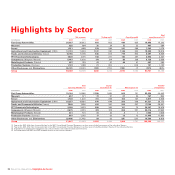 21
21 -
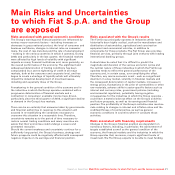 22
22 -
 23
23 -
 24
24 -
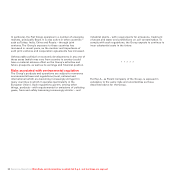 25
25 -
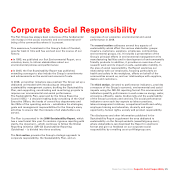 26
26 -
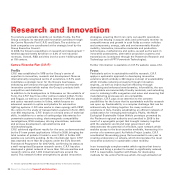 27
27 -
 28
28 -
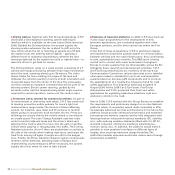 29
29 -
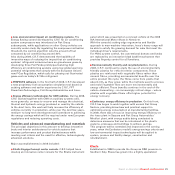 30
30 -
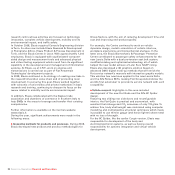 31
31 -
 32
32 -
 33
33 -
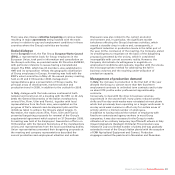 34
34 -
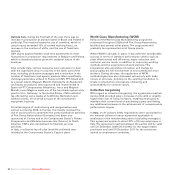 35
35 -
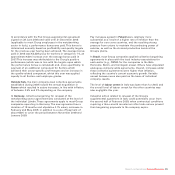 36
36 -
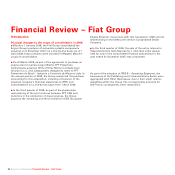 37
37 -
 38
38 -
 39
39 -
 40
40 -
 41
41 -
 42
42 -
 43
43 -
 44
44 -
 45
45 -
 46
46 -
 47
47 -
 48
48 -
 49
49 -
 50
50 -
 51
51 -
 52
52 -
 53
53 -
 54
54 -
 55
55 -
 56
56 -
 57
57 -
 58
58 -
 59
59 -
 60
60 -
 61
61 -
 62
62 -
 63
63 -
 64
64 -
 65
65 -
 66
66 -
 67
67 -
 68
68 -
 69
69 -
 70
70 -
 71
71 -
 72
72 -
 73
73 -
 74
74 -
 75
75 -
 76
76 -
 77
77 -
 78
78 -
 79
79 -
 80
80 -
 81
81 -
 82
82 -
 83
83 -
 84
84 -
 85
85 -
 86
86 -
 87
87 -
 88
88 -
 89
89 -
 90
90 -
 91
91 -
 92
92 -
 93
93 -
 94
94 -
 95
95 -
 96
96 -
 97
97 -
 98
98 -
 99
99 -
 100
100 -
 101
101 -
 102
102 -
 103
103 -
 104
104 -
 105
105 -
 106
106 -
 107
107 -
 108
108 -
 109
109 -
 110
110 -
 111
111 -
 112
112 -
 113
113 -
 114
114 -
 115
115 -
 116
116 -
 117
117 -
 118
118 -
 119
119 -
 120
120 -
 121
121 -
 122
122 -
 123
123 -
 124
124 -
 125
125 -
 126
126 -
 127
127 -
 128
128 -
 129
129 -
 130
130 -
 131
131 -
 132
132 -
 133
133 -
 134
134 -
 135
135 -
 136
136 -
 137
137 -
 138
138 -
 139
139 -
 140
140 -
 141
141 -
 142
142 -
 143
143 -
 144
144 -
 145
145 -
 146
146 -
 147
147 -
 148
148 -
 149
149 -
 150
150 -
 151
151 -
 152
152 -
 153
153 -
 154
154 -
 155
155 -
 156
156 -
 157
157 -
 158
158 -
 159
159 -
 160
160 -
 161
161 -
 162
162 -
 163
163 -
 164
164 -
 165
165 -
 166
166 -
 167
167 -
 168
168 -
 169
169 -
 170
170 -
 171
171 -
 172
172 -
 173
173 -
 174
174 -
 175
175 -
 176
176 -
 177
177 -
 178
178 -
 179
179 -
 180
180 -
 181
181 -
 182
182 -
 183
183 -
 184
184 -
 185
185 -
 186
186 -
 187
187 -
 188
188 -
 189
189 -
 190
190 -
 191
191 -
 192
192 -
 193
193 -
 194
194 -
 195
195 -
 196
196 -
 197
197 -
 198
198 -
 199
199 -
 200
200 -
 201
201 -
 202
202 -
 203
203 -
 204
204 -
 205
205 -
 206
206 -
 207
207 -
 208
208 -
 209
209 -
 210
210 -
 211
211 -
 212
212 -
 213
213 -
 214
214 -
 215
215 -
 216
216 -
 217
217 -
 218
218 -
 219
219 -
 220
220 -
 221
221 -
 222
222 -
 223
223 -
 224
224 -
 225
225 -
 226
226 -
 227
227 -
 228
228 -
 229
229 -
 230
230 -
 231
231 -
 232
232 -
 233
233 -
 234
234 -
 235
235 -
 236
236 -
 237
237 -
 238
238 -
 239
239 -
 240
240 -
 241
241 -
 242
242 -
 243
243 -
 244
244 -
 245
245 -
 246
246 -
 247
247 -
 248
248 -
 249
249 -
 250
250 -
 251
251 -
 252
252 -
 253
253 -
 254
254 -
 255
255 -
 256
256 -
 257
257 -
 258
258 -
 259
259 -
 260
260 -
 261
261 -
 262
262 -
 263
263 -
 264
264 -
 265
265 -
 266
266 -
 267
267 -
 268
268 -
 269
269 -
 270
270 -
 271
271 -
 272
272 -
 273
273 -
 274
274 -
 275
275 -
 276
276 -
 277
277 -
 278
278 -
 279
279 -
 280
280 -
 281
281 -
 282
282 -
 283
283 -
 284
284 -
 285
285 -
 286
286 -
 287
287 -
 288
288 -
 289
289 -
 290
290 -
 291
291 -
 292
292 -
 293
293 -
 294
294 -
 295
295 -
 296
296 -
 297
297 -
 298
298 -
 299
299 -
 300
300 -
 301
301 -
 302
302 -
 303
303 -
 304
304 -
 305
305 -
 306
306 -
 307
307 -
 308
308 -
 309
309 -
 310
310 -
 311
311 -
 312
312 -
 313
313 -
 314
314 -
 315
315 -
 316
316 -
 317
317 -
 318
318 -
 319
319 -
 320
320 -
 321
321 -
 322
322 -
 323
323 -
 324
324 -
 325
325 -
 326
326 -
 327
327 -
 328
328 -
 329
329 -
 330
330 -
 331
331 -
 332
332 -
 333
333 -
 334
334 -
 335
335 -
 336
336 -
 337
337 -
 338
338 -
 339
339 -
 340
340 -
 341
341 -
 342
342 -
 343
343 -
 344
344 -
 345
345 -
 346
346 -
 347
347 -
 348
348 -
 349
349 -
 350
350 -
 351
351 -
 352
352 -
 353
353 -
 354
354 -
 355
355 -
 356
356
 |
 |
Report on Operations Research and Innovation28
Driving Advisor. Together with Fiat Group Automobiles, C.R.F.
developed a lane departure warning system with haptic
interface which is available on the new Lancia Delta launched
2008. Dubbed the Driving Advisor, the system signals the
steering system whenever the car is about to drift out of its
lane. Active when the car is traveling at speeds over 55 kph,
the system turns the steering wheel slightly – applying a
different level of resistance depending to whether the lane
markings detected by the system are solid or dashed lines – to
warn the driver to get back on course.
The Driving Advisor relies on a video system consisting of a T
camera and image processing software that relays information
about the road, scanning ahead up to 30 metres. The video
device tracks the lines marking the edges of the lane and
indicates the vehicle’s position in terms of both orientation and
movement away from the center of the lane. The processing
unit then selects an actuation command that will be sent to the
steering system. Electric power steering, guided by the
actuation motor and the torque/steering wheel angle sensors
required for correct operation, carries out the control order.
Preventive safety systems for commercial vehicles. As part of
its commitment to improving road safety, C.R.F. has continued
to develop preventive safety systems for Iveco’s light and
medium/heavy range trucks. The Centre’s Collision Warning
system, for instance, uses radar and TV cameras to monitor
what’s going on around the truck and alert drivers if they are
following too closely behind the vehicle ahead or traveling at
an unsafe speed. The Lane Change Assistant uses two radar
units to monitor adjacent lanes and the driver’s blind spot,
warning if the truck is about to move into the path of another
vehicle when passing or merging back into traffic. The Turning
Assistant alerts the driver if there are pedestrians or cyclists to
the side of the vehicle when making right turns, and keeps the
truck from moving off again if people are still in the danger
zone. Finally, the Driver Attention Support system continuously
monitors driver alertness, detecting signs of fatigue and
implementing countermeasures. When necessary, the system
signals the driver when it’s time to take a break.
Evolution of telematic platforms. In 2008, C.R.F. was involved
in two major programmes for the development of new
telematic applications, one conducted together with other
European partners, and the other carried out within the Fiat
Group.
In the first of these programmes, C.R.F. is working to design
and implement cooperative systems based on communication
between vehicles and the road infrastructure, thus contributing
to safe, sustainable future mobility. This R&D work is being
carried out in concert with major automakers throughout
Europe to create systems that are interoperable across the EU.
Alongside these research and development activities, C.R.F.
and Fiat Group Automobiles are members of the Car-2-Car
Communication Consortium, whose objectives are to establish
a European industry standard for car-to-car communication
systems based on wireless LAN components and to promote
the establishment of a royalty-free frequency band for road
safety applications. This frequency band was assigned in
August 2008. At the 2008 Car-2-Car Forum, Fiat Group
Automobiles and C.R.F. presented their first road safety
applications for signalling hazardous situations such as a
stationary vehicle in the road.
Also in 2008, C.R.F. worked with the Group Sectors to establish
the requirements and preliminary design for an inter-Sectoral
platform which, if completed, would make it possible to offer
increasingly advanced services and functions in the future. The
platform would provide enhanced performance and extended
processing and memory capacity and be fully integrated with
latest-generation telecommunications standards (3G, satellite,
etc.), with evolving wireless standards (Bluetooth 2.0, Wi-Fi),
and with consumer electronics interfaces (smartphones,
memory cards, etc.). In addition, the platform would make it
possible to view graphical interfaces on different types of
display, thus ensuring maximum design flexibility. The
platform’s modular approach would also reduce costs through
end-product scalability.
